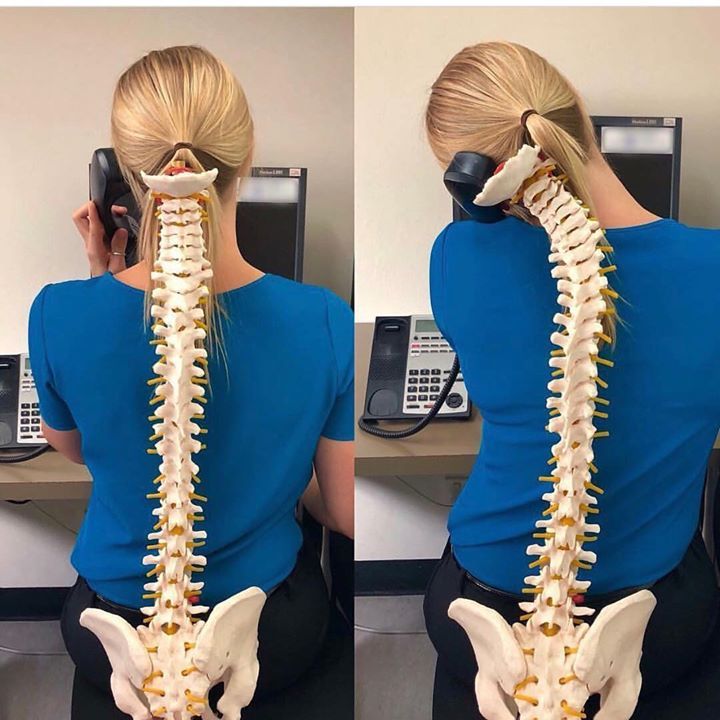Evaluating Difficult Clients
In today’s blog we have a question from a recent grad and who had taken CEAS I with Marty Frame and is experiencing some push back from clients who refuse her advice after performing an evaluation.
Hey Marty, I took your course in Seattle 5/2 & 3. I have already done two ergo evals. YAY! I had questions from the employer and I would like some clarification or advice from you.
What happens if the employer has ergo equipment yet the worker will not use it? I have two gals who work at a vision clinic at the front desk. Both insist on sitting on their one leg bent under them while typing. One of them refuses to use the headset when she spends a great deal of time on the phone scheduling. Her head is bent sideways, shoulder scrunches up and spine is twisted. Can the employer “INSIST” that the headset be worn and both feet need to be on the floor?
I will be visiting the office for a staff meeting to point out the merits of working smart and ergonomically. I intend to share statistics of shoulder, spine and bilateral arm issues among office worker claims. Also, can the employer remove arm rests without asking anyone? They moved into a new office and the doctors do not want arm rests marking up the walls like the last place.

Marty says:
I’m glad you have been able to perform some assessments.
To answer your questions:
An employer can require an employee to use a piece of equipment or perform a task in a certain way and make it a safety violation if the employee doesn’t comply, but punitive measures should be a last resort. I would approach the employee and try to understand why they sit in a certain manner. or don’t use a piece of equipment.My experience is when woman sit on one leg they are trying to get stability. The seat pan may be too deep or the chair may not have good lumbar support. This is a time I would try to see if a foot rest would help. I also would ask the employee to just try sitting with her feet on the floor or the foot stool for a specific period of time she is willing to try it – 15 min, 1 hour what ever and then ask her to gradually increase her time. Realize this may be a habit and is not going to change over night. I would tell her the rationale for sitting with her feet on the floor and the problems with sitting on one leg – more SIJ stress especially during her menstrual period, more stress at the knee, decreased circulation , increase chance of varicose veins.
I’d use the same thinking with the employee that doesn’t want to use the head set. Sometimes it may just be that the type of head set may be a problem. Here again question the employee why. She may do better with the other type of head set (head band vrs over the ear) . Some people have trouble hearing the other party or being heard and that is why they don’t use it. It could be a poor quality headset or the phones may not interact with it well. Try to figure out why the employee is resistant and try to address that resistance rather than forcing it on the employee.
If you encounter an employee that is unwilling to try anything you suggest then, from my experience, that employee usually has other employment issues and these other issues are manifesting themselves as a medical issue. This is now a management or HR issue.Regarding the arm rests on the chairs – Once again the employer can decide that the chairs won’t have arm rests. This is not ideal especially if employees had armrests before and feel that this is being taken away from them. Ideally the employer would discuss this with the employees and discuss the concerns with the walls (this is a pretty poor rationale for no arm rests in my opinion). A discussion with the employer that some employees may feel more comfortable sitting in chairs with arm rests to help provide some upper extremity support and decrease stress on the muscles which suspend the shoulder girdle may help. if the employer is set on no arm rests then see if you can move the keyboard and mouse further back on the desk and allow the employee’s forearms to rest on the desk. this also helps to decrease stress on the muscles.
Hope this helps,
Marty
Have you experienced similar difficulties with your clients? If so, how did you resolve them? Let us know in the comments!



I agree with Marty’s answer. I have found explaining “why” I make a suggestion really helps the employee. I try to show them before and after pictures too. They can see for themselves that they are not in neutral ( in the before pictures) and I explain that over time muscles shorten, fatigue when in awkward positions. Almost all buy into the changes then. Marty’s point about changing a habit is valid. I do the same thing and ask the employee to give a new behavior time explaining that anything new feels odd at first.
Very good article regarding ergonomic change resistance.